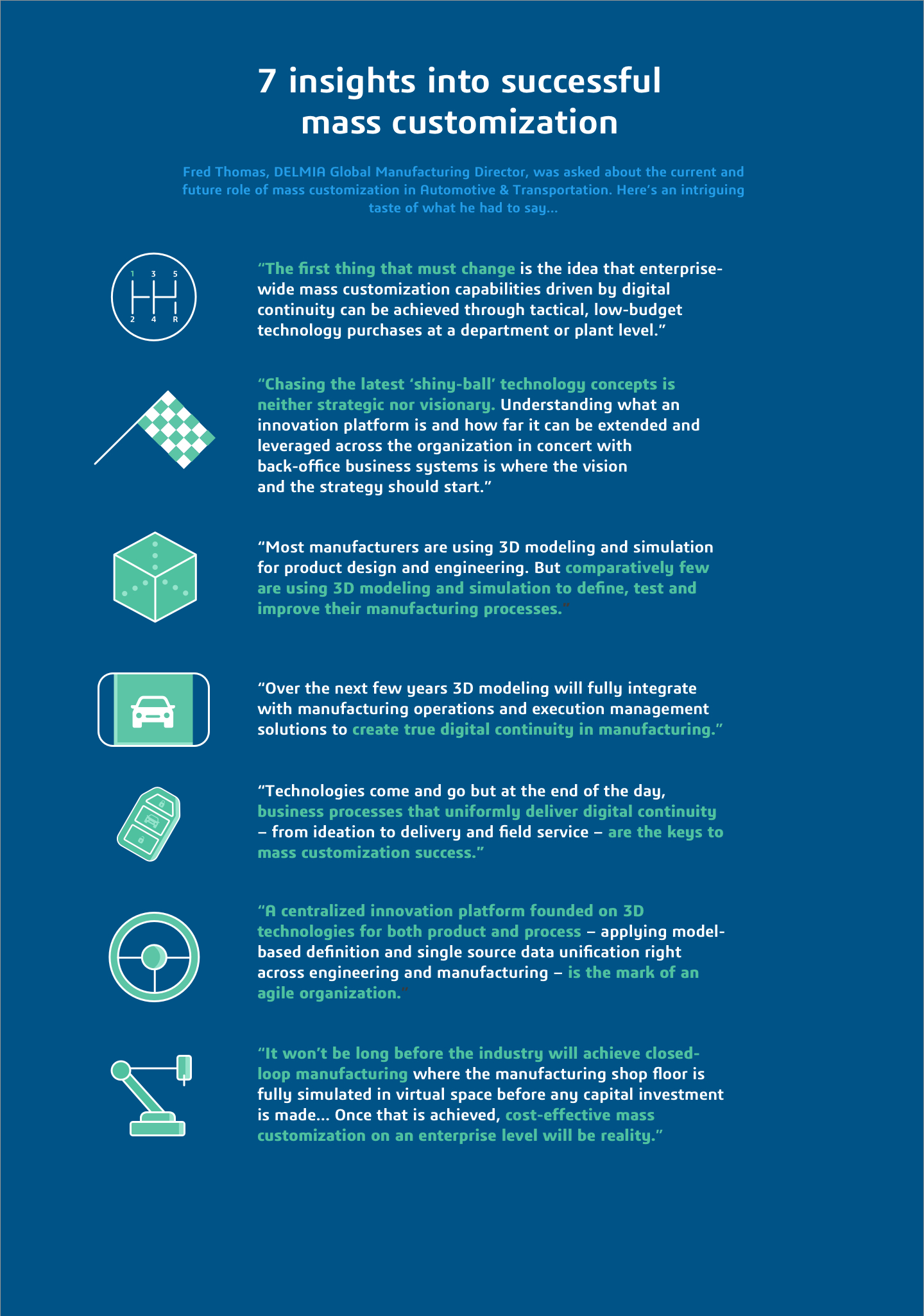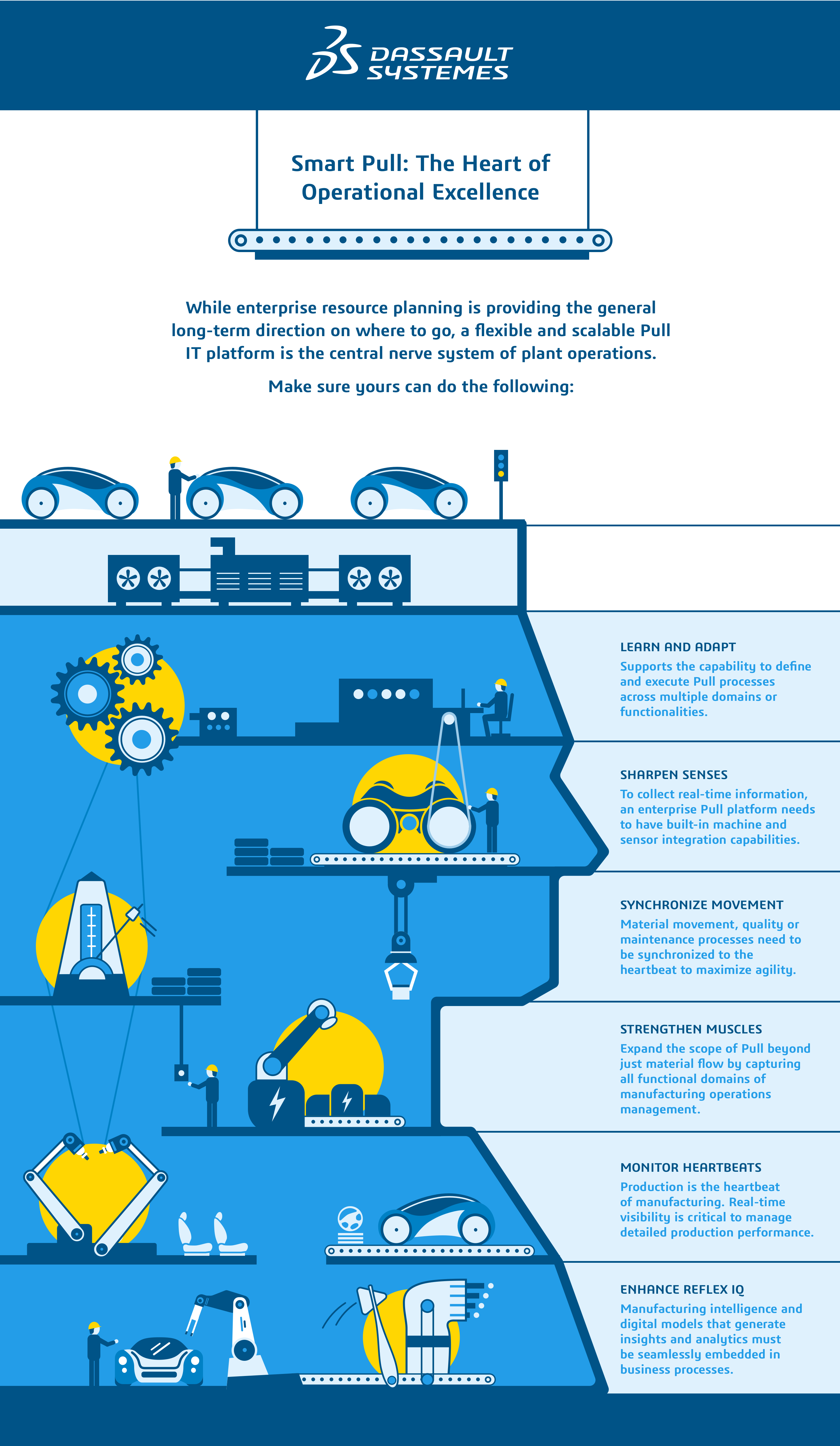|
Mass customization. Production of one. Made to order. Mass personalization… whatever you call it, customized production is the industrial revolution of our time. For the automotive industry, the digitalization of manufacturing – and the on-demand model that it enables – unlocks the opportunity for companies to meet the growing consumer appetite for highly customized vehicles.
Transportation original equipment manufacturers (OEMs), next generation innovators, and their strategic suppliers, need to revolutionize their plants and manufacturing processes to remain competitive, profitable and responsive to global/local opportunities. It’s a tricky balancing act – remaining agile enough and profitable enough to adapt global vehicle production to sync with regional configurations and customizations, thereby satisfying local market demand.
Insights from experts…
Mass customization is not a new concept. Designing, engineering and  manufacturing multiple variants of a product to meet the specific requirements of a customer has been around for quite a while. In general, mass customization requires digital continuity at an enterprise level across engineering and manufacturing to deliver best-in-class operational performance that meets today’s customer expectations. manufacturing multiple variants of a product to meet the specific requirements of a customer has been around for quite a while. In general, mass customization requires digital continuity at an enterprise level across engineering and manufacturing to deliver best-in-class operational performance that meets today’s customer expectations.
3D modeling and simulation of both product and process is critical – but using one without the other has only a marginal positive impact on the goal of profitable, flexible and responsive mass customization.
Heart of operational excellence
And these days it’s all about reaction times. ‘Pull’ production processes improve the responsiveness and agility of lean initiatives. They remove the constraints of Kanban  systems by expanding the scope of Pull process execution. systems by expanding the scope of Pull process execution.
The latest solutions are making this possible. By embedding Apriso Manufacturing Process Intelligence (MPI) into a Pull process, the first ‘Smart Pull’ manufacturing solution was created. The result is a more intelligent process execution with greater accuracy and responsiveness – reducing waste and lead time while improving delivery performance.
Indeed, production operations management must be optimized across the entire enterprise, while unifying and standardizing quality management. Real-time, cross-plant collaboration is a must-have. In particular, they need better visibility of manufacturing operations to align business performance targets.
The need for speed
New Product Introduction (NPI) also needs to be accelerated for those companies wishing to be first to market. Such acceleration is achieved with rapid manufacturing process design, integration and deployment, yielding shorter Time-To-Market and Time-To-Volume.
A select few manufacturers having taken the lead, revolutionizing the industry by using sophisticated factory automation to produce individualized vehicles on flexible production lines. Multi-purpose robots now make it possible to manufacture unique items at nearly the pace of high-speed mass production. The cars they assemble come off the assembly line in small, highly customized batches, like a high-tech version of hand-made craftsmanship from a bygone era.
Not easy but necessary
Nobody is pretending that the kind of transformation companies must undergo to compete for ‘the order of one’ is easy. But it is utterly necessary and now, with the latest technology, totally possible. Big changes need to happen upstream – starting with engineering and the way that the production system is designed and built – and then changing the way the production system is run.
|